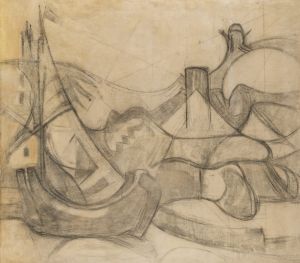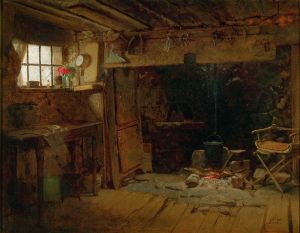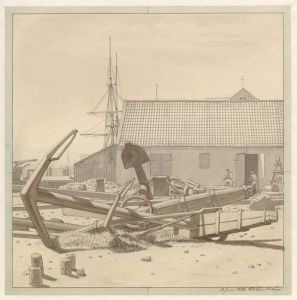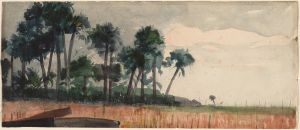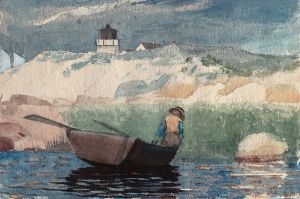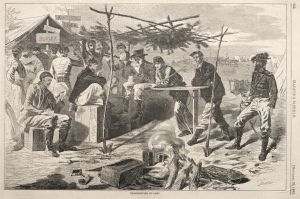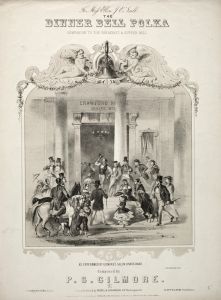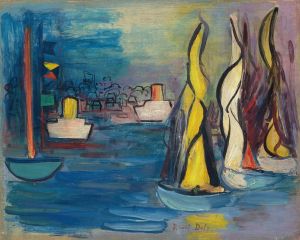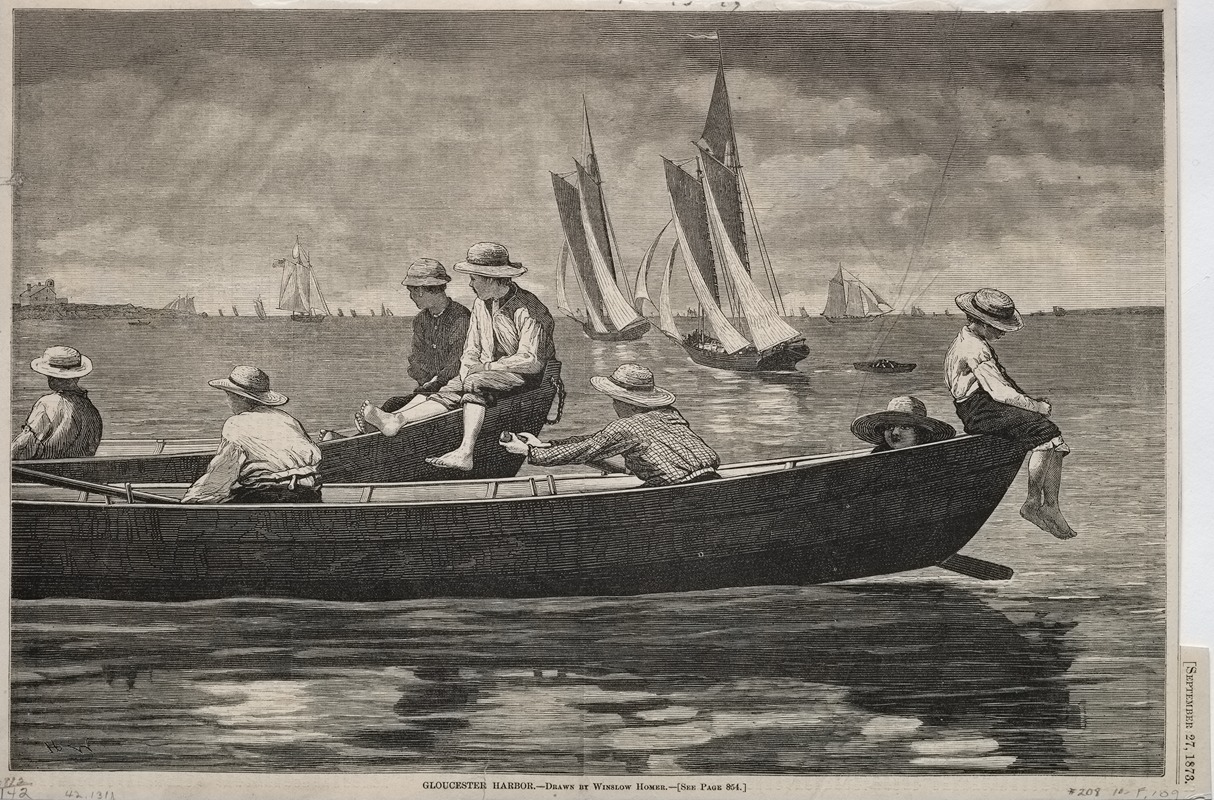
Gloucester Harbor
A hand-painted replica of Winslow Homer’s masterpiece Gloucester Harbor, meticulously crafted by professional artists to capture the true essence of the original. Each piece is created with museum-quality canvas and rare mineral pigments, carefully painted by experienced artists with delicate brushstrokes and rich, layered colors to perfectly recreate the texture of the original artwork. Unlike machine-printed reproductions, this hand-painted version brings the painting to life, infused with the artist’s emotions and skill in every stroke. Whether for personal collection or home decoration, it instantly elevates the artistic atmosphere of any space.
"Gloucester Harbor" is a painting by the American artist Winslow Homer, created in 1873. Winslow Homer (1836–1910) is widely regarded as one of the most significant figures in 19th-century American art, known for his depictions of seascapes, landscapes, and scenes of everyday life. This particular work reflects Homer’s interest in maritime themes and his ability to capture the interplay of light, water, and atmosphere.
The painting depicts Gloucester Harbor, a prominent fishing port located in Gloucester, Massachusetts. During the 19th century, Gloucester was one of the most important centers of the fishing industry in New England, and its harbor was a bustling site of maritime activity. Homer’s choice of subject matter aligns with his broader interest in portraying the lives and environments of working people, particularly those connected to the sea.
"Gloucester Harbor" was created during a period when Homer was experimenting with watercolors, a medium that he would later master and become renowned for. The painting is executed in watercolor and gouache on paper, showcasing Homer’s skill in using these materials to convey the transparency and movement of water. The work captures the harbor on a calm day, with boats gently floating on the water and the surrounding landscape bathed in soft light. The composition emphasizes the tranquility of the scene, while the use of color and brushwork demonstrates Homer’s growing confidence in the watercolor medium.
This painting is part of a series of works that Homer created during his visits to Gloucester in the early 1870s. These visits marked an important phase in his career, as he began to focus more on outdoor scenes and the natural environment. The Gloucester works are considered significant in Homer’s artistic development, as they reflect his transition from illustration to a more painterly approach and his increasing interest in capturing the effects of light and atmosphere.
Today, "Gloucester Harbor" is held in the collection of the Art Institute of Chicago. It is considered an important example of Homer’s early watercolor work and a testament to his ability to depict the beauty and character of New England’s coastal landscapes. The painting continues to be celebrated for its technical skill and its evocative portrayal of a quintessentially American scene.





